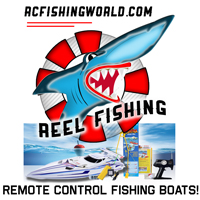The Newbie Guide To Freshwater Fishing
We’ve all been in your predicament. You’re looking for that well deserved promotion at work and you know one piece of information about the boss that nobody else knows (or they don’t want to admit), he/she loves to fish. He/She’s been bugging everybody in the office to spend some time on his luxury boat doing some freshwater fishing but the boss doesn’t get a nibble. Well it’s your turn at bat, get ready to strike a home run.
Ok, so let’s start with the basics. You are going to need to spend a little of that hard earned money at your local Walmart or Bait and Tackle Shop to bring your fishing tools into the new millennium. If you want to impress the boss, you don’t want to show up with your Snoopy Zebco Rod/Reel combo that you used twenty years ago to reel in those monster minnows. You need to sell yourself as an angler and not just a fishing person.
Just like Picasso needed an easel and nice set of paintbrushes, you need to get yourself a quality rod and reel. Most Bait Shops and Sporting Good stores sell those combo kits which will likely work for your situation. The great aspect of these kits is that the rod and reel are tailored for one another. Fishing rods (remove the words fishing pole from your vocabulary) come in just about every conceivable format. You’ll want to do some preliminary homework in determining where your boss plans to take you and what you will be fishing for. Try to work it in between your meetings about TPS reports and such. What you are interested in is what species of fish you are likely targeting. If you don’t want to seem to obvious, just find out what body of water you plan to fish and then open up old google and do a search for it with the keywords “fish report” added on. You will get a wealth of information from forums or local fishing reports regarding the body of water in question and the types of fish you are likely to catch. Once you figure out the species you’ll base your rod/reel purchasing off of that.
If you are targeting most species of fish (largemouth, smallmouth, panfish, walleye, catfish), you can probably get away with a five to six foot rod. Anything smaller could easily snap if you happen to tag a huge catfish or even a good size largemouth bass. Anything bigger and you’ll be whipping the lips off of those poor innocent panfish. Pay special attention to the limber quality of the rod. While Ultralight rods will give you a better feel for the bite, they will make reeling in that lunker that much harder and increase your chance of having to tell stories about the one that got away. Your best bet is to stay neutral and get a Medium weight pole. It will be sturdy enough for most breeds of freshwater fish.
Fishin Reels now come in mind numbing assortment of types and sizes. You might remember your old faithful Zebco reel where you never saw the fishing line, it just disappeared into the endless depths of snoopy’s mouth. These types of reels are known as closed faced reels. If you want to impress the man, forget this type. While it is the easiest reel to use, it is kids play. You need to look seasoned for your adventure. You might next notice the really pricey reels known as bait casters. Yeah, you’ve put in your time watching ESPN Bass Masters tournaments and noticed the pro’s using these types of reels like it was an extension of their arm. They just whip their bait out and yank in the lunkers. For your adventure, skip the bait casting reels. If any piece of fishing equipment can make a six foot, two hundred and fifty pound grown man weep in agony, this is the one. It takes years to get the right feel for this device and you will have better luck at figuring out a rubic’s cube (ahem, no pulling the stickers off) then trying to get a successful cast out of this reel. So my recommendation for your expedition would be the old faithful Open Faced Spinning Reel. Yes, you’ll need to do some practice casting before you venture out for your trip just to get the hang of this one. The sporting goods shop that you visit for your supplies should also sell little plastic plugs called practice or casting plugs. Get you a couple of these and practice in the backyard. Put a bucket out about twenty feet and see if you can hammer your plug home.
To make things even more complicated, you’ll notice some numbers on the spool (the part of the reel that your fishing line is wound around). Numbers such as 6lb/150yd, 8lb/100yd, 10lb/75yd. No, these are shot put records, these are the line capacities. Fishing line comes in various “strengths” which are measured in the good old English system, pounds. Basically, this is the maximum amount of fish poundage you could catch with the fishing line you have installed. So if you are going for catfish, which can easily get up into the twenty pound size, you’ll want a fishing line that is rated in that neighborhood. So your probably thinking, well why not just go big( i do it with McDonalds value meals, it should work here. right). Well, you’ll notice that the bigger the poundage the less line (measured in yds) you’ll be able to put on your reel. This means when you see the fish jumping out in the water 150 yds and you cast out with only 100 yds on your reel, you’ll fall short. Any you definitely don’t want to fall short in front of your new best friend. So it’s imperative that you match up your fishing line to the type of fish you are going for.
I’ve got two wonderful tips to give you when it comes to fishing line. Number one, pay that extra ten bucks and get an extra spool. Have the sporting goods shop string it up for you with a different pound fishing line just in case the fish get big. This is an invaluable back up plan in case you get the dreaded bird’s nest of death, one quick removal of the old spool and your back in action. Deal with the dreaded fishing string birds nest another day. Tip Number Two, remove your fishing spool from your fishing reel and drop it in a glass of warm water overnight. No, you won’t grow a fishing fairy that you can take along but what this does is help mold the line to your spool. This helps in preventing those birds nest after your bazillenth cast. Its one of the smartest things you can do with new fishing line.
So lets take tally of what you’ve got in your shopping cart..rod,reel and fishing line. Hmm, we seem to be missing something. Yep, we need some form of bait. Well this is where your research into where you’ll be heading comes in. Generally the information you find regarding what types of fish you will be catching will also point you into the direction of what these fish bite on. If you strike out online, ask the youngest looking employee in the fishing section of the sporting good store what the fish hit on at that particular lake. Why the youngest, because they have the most free time on their hands so they probably have the experience (I worked at a Bait and Tackle store for three years when I was in my teens. I worked there not because I needed the money, but because I got the scoop on the best fishing spots and also got a killer discount on bait and tackle). Go with their recommendations and stock up. If you can afford it, get at least two of each of what they recommend. The best fishing spots are also the best spots to loose fishing gear( think sunken tree’s). The worst feeling you can have is to be nailing the fish and loose the only thing they are hitting on.
So there you go. Armed with this basic information, you should be able to set yourself up for fishing success. One more thing to keep in mind, don’t catch more than your boss or you could find yourself out fishing for a new job.
If your looking for a great source of information regarding fishing Utah, including fishing reports, in-depth analysis of local lakes and other valuable data visit my blog at:
http://www.fishingutah.net
Love to fish, Love to live!
Tags: boss, Fish, Fishing, fishing tools, Freshwater, freshwater fishing, Guide, impress, luxury boat, millennium, money 97, Monster, newbie guide, nibble, predicament, reel combo, rod reel, snoopy, tackle shop, twenty years, walmart, zebco


